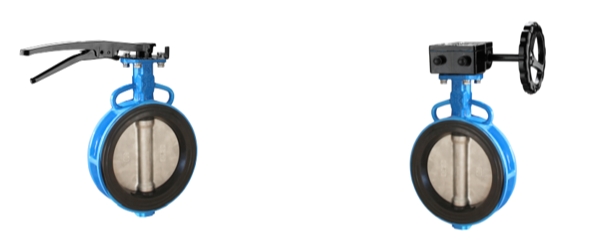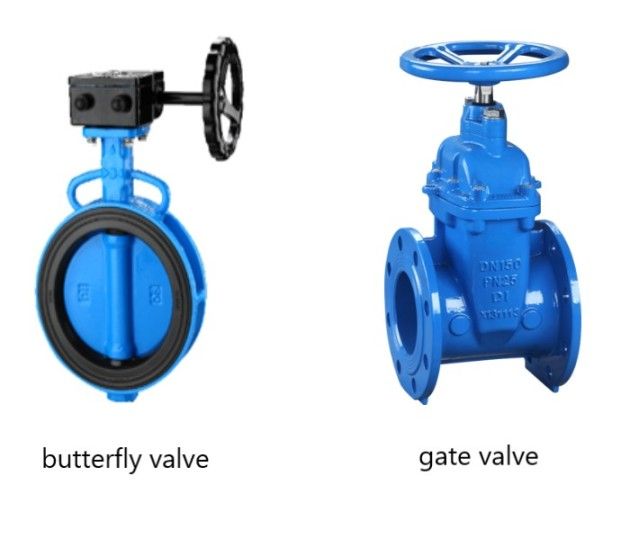Butterfly Valve vs Gate Valve
Comprehensive Comparison and Insights
Selecting the ideal valve type for any commercial or industrial application is essential to ensuring maximum performance. Butterfly and gate valves are two popular choices with each offering unique advantages that make them suitable for various situations. This blog will help you make an informed choice by providing a comprehensive comparison between gate and butterfly valves.
Valves Overview
Valves are essential components in various industrial processes, providing control of fluid or gas flow. There are numerous types of valves designed for specific functions and applications - choosing the appropriate valve can have a major impact on efficiency and safety of any system.
The importance of choosing the right valve
It is important to select the right valve for a system in order to maintain integrity, minimize maintenance costs and ensure smooth operation. Butterfly valves or gate valves are selected based on a variety of factors, including the type of fluid, the pressure required, and the operational conditions.
Table of contents
Understanding Butterfly Valves

Definition of Butterfly Valves
Butterfly valves utilize a disc-shaped regulator to control flow. As its disc rotates, fluid can either flow freely through or be restricted or blocked completely for quick shutoff.
Components of Butterfly Valves
- Body: is the main structure that houses the disc and its components.
- Disc: The rotating element which controls flow.
- Stem: Connects disc to actuator.
- Seal: Seals that are leak-proof.
- Actuator: This device provides the force necessary to move the disc.
How Butterfly Valves Work
Butterfly valves are suitable for applications that require frequent operation due to their straightforward mechanism. Their easy operation makes them particularly suitable for frequent applications.
Types of Butterfly Valves
- Wafer type: Fits in between two flanges and is often used for lower pressure systems.
- Lug type: Similar in appearance to wafer, but with threaded inserts that allow installation in systems under higher pressure.
- Double offset: This seals well and is ideal for applications that require minimal leakage.
- Triple offset: Used for critical applications with high temperature and pressure, offering zero leakage.
Applications of Butterfly Valves
Due to their small size, low price, and efficient operation, butterfly valves are used widely in industries like water treatment, chemical processes, and HVAC systems.
Understanding Gate Valves

Definition of Gate Valves
Gate valves use a flat, linear-motion gate to either block or allow fluid movement and are typically designed for on/off control with minimal pressure loss when fully opened.
Components of Gate Valves
- Body: The main structure that houses the gate and other internal components.
- Gate: The flat disc that moves up and down to control flow.
- Stem: Connects the gate to the actuator.
- Seat: Provides a sealing surface for the gate.
- Actuator: Mechanism for moving the stem and gate.
How Gate Valves Work
The actuator lifts or lowers a gate by means of the stem. This allows or restricts fluid flow. Gate valves are suitable for applications that require gradual control.
Types of Gate Valves
- Risen Stem The stem rises when the valve opens to provide visual indication of valve location.
- Non rising stem: The stem doesn't rise. It is suitable for applications where space is limited.
- Solid Gate: A solid, robust gate.
- Flexible Gate: A gate that has a slight amount of flexibility to allow for thermal expansion.
Applications of Gate Valves
Gate valves can be used for applications that require a complete shutoff. These include water distribution systems and oil and gas pipelines. They are ideal for isolating a flow because they can provide a tight seal.
Butterfly Valve vs Gate Valve

- Structural: Butterfly valves are smaller and lighter than gate vales, making it easier to install them and manage in small spaces. Gate valves are bulkier due to their linear motion.
- Operational: Butterfly valves offer quick, quarter-turn operation, ideal for applications requiring rapid shutoff. Gate valves are more suitable for applications that require gradual control due to their linear, slow operation.
- Performance: Butterfly valves are efficient for low to medium pressure systems. Gate valves are used for high pressure applications because of their robust design and tight seal capabilities.
- Cost comparison - Butterfly valves are more cost effective due to their simple design and lower materials requirements. Gate valves are more expensive due to their complex construction.
- Maintenance Requirements: Butterfly valves are easier to maintain, with fewer moving parts and straightforward operation. Gate valves need more maintenance to maintain proper functionality and sealing, particularly in high-pressure situations.
- Suitability for Different Applications: Butterfly valves are versatile and suitable for a wide range of applications, including water treatment, chemical processing, and HVAC systems. Gate valves can be used in applications that require tight shutoffs and high pressure handling such as oil and gasoline pipelines.
- Durability comparison: Gate Valves are typically more durable and have a longer service life when used in environments with high temperatures and pressures. Butterfly valves are durable but better suited to moderate conditions.
- Efficiency: Butterfly valves are efficient and provide minimal pressure loss when fully opened. Gate valves are efficient when fully opened or closed, but they do not regulate flow as well due to the potential for flow turbulence.
- Installation Consideration: Butterfly valves are easier to install due to their compact size and lightweight design. Gate valves are larger and heavier, making them difficult to install in small or hard-to reach areas.
Key Distinction
The primary distinction between butterfly valves and gate valves lies in their operation and functionality. Gate valves are designed solely for opening and closing the flow of fluid; they operate by lifting or lowering a gate to start or stop the flow, making them ideal for on/off applications. In contrast, butterfly valves are more versatile. They use a rotating disc to control fluid flow and can be employed not only to switch on and off but also to adjust and regulate the flow, offering finer control over the fluid passing through the system. This makes butterfly valves suitable for applications requiring both flow regulation and shutoff capabilities.
Real-World Applications
Butterfly valves exhibit an advantage in high-flow, low-pressure scenarios due to their quarter-turn rotational movement, allowing for swift open-close actions that facilitate rapid fluid isolation or regulation. Their streamlined structure ensures minimal pressure drop, making them ideal for HVAC systems, water treatment plants, and automated industrial processes where efficiency and space conservation are paramount.
In contrast, gate valves offer finesse where precise flow control over extended periods is crucial. Their linear motion allows for a more gradual sealing process against a robust metal gate, reducing wear under high-pressure conditions often found in oil refineries and petrochemical industries.
Conclusion
The specific application will determine which valve you choose. You can make a more informed choice if you understand the differences between them in terms of design, performance and maintenance. Selecting the right valve for your system is essential to its performance and reliability.
FAQs
What's the difference between gate and butterfly valves?
Their main differences are their design and operation. Gate valves are designed with a linear seal and a gate that rotates for a quick shutoff. Butterfly valves have a rotating disk for a quick shutoff.
Which valve would be better for applications involving high pressure?
Due to their robustness and ability to seal tightly, gate valves are the best choice for high-pressure application.
Are gate valves cheaper than butterfly valves?
No, because of their simple design and low material requirements.
What are the differences in maintenance between these valves
The butterfly valve is easier to maintain because it has fewer moving components. Gate valves need more maintenance to ensure they are working properly, especially when exposed to high pressure.
Which valve provides better flow control?
Butterfly vales offer better flow control with minimal pressure loss when fully opened. Gate valves have a lower flow rate but are better at shutting off the system.
Where are butterfly valves used?
HVAC systems, water treatment, chemical processing and water treatment are all common uses for these valves. Gate valves can be found in oil and gas pipelines with high pressure, power plants and industrial applications that require tight shutoff.
